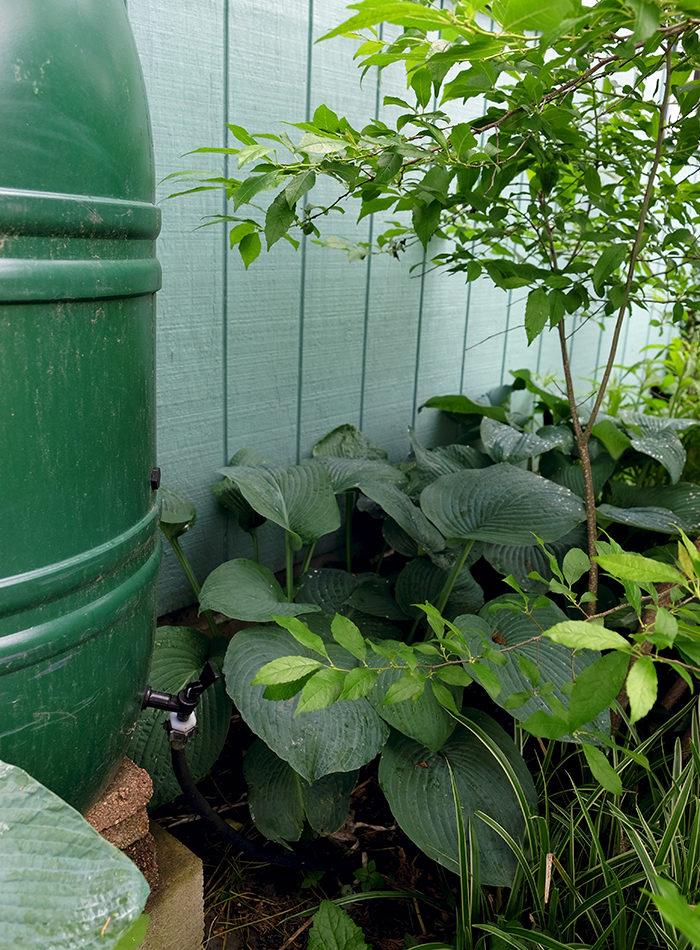
Long-range forecasts for the summer have been all over the place. Some predicted “normal” weather for most of the Northeast and rainier than usual weather for southern New England. Others said the entire Northeast should expect a hotter, drier summer. Whatever the season has in store—and whatever “normal” means anymore—when it comes to adequate precipitation, it’s important to hope for the best while preparing for the worst.
Get to know your garden’s patterns of sun, wind, and shade, as well as the quirks of its soil texture and water-holding capacity. And then plant accordingly. The goal is to include perennials that, once established, will not need any supplemental water under “normal” weather conditions. You get bonus points if your plants survive long heat waves and periods of drought. Be willing to test their limits—and yours. A plant or two here or there may be worth coddling (I’m thinking about the roses in my own garden), but there are too many excellent choices for your garden’s conditions to suffer stragglers.

Don’t let the rain that falls run down the street. The more garden beds you carve out of lawn (and pavement), the more rain will soak in. Go a step further and set up rain barrels under your downspouts to feed rain gardens—gardens with especially thirsty plants. Even a light shower (one-tenth of an inch) on 1000 square feet of roof will fill a 60-gallon barrel. Put your barrels up on blocks to increase water pressure, then attach soaker hoses and wind them through nearby beds. This works best on level ground or beds with a slight slope downhill. Rain gardens are the perfect places to showcase plants such as willows (Salix spp. and cvs., Zones 4–9), redtwig dogwoods (Cornus sericea ‘Cardinal’, Zones 3–8), and roses (Rosa spp. and cvs., Zones 3–9) that thrive in moist soil.

Add compost annually to improve the soil’s structure and increase its water-holding capacity. A 2-inch layer of mulch, such as shredded leaves or buckwheat hulls, will help cool the soil and slow evaporation.
Check your soil’s moisture level periodically by digging down about 6 inches. A deep watering should reach 6 inches down. If you aren’t under water restrictions and want to set sprinklers during dry spells to prevent plant stress and loss, do so early in the day, before wind and heat whisk water into the atmosphere. Keep in mind that dry soil can become hydrophobic and very difficult to remoisten. Set the sprinkler on low and watch for runoff. Make it a rule to water deeply rather than frequently.
Plants in containers have to be watered regularly, but you can reduce your usage by collecting household gray water. Place tubs in the kitchen sink and shower to fill while the water heats up. Transfer that and your rinse water to watering cans for your daily rounds.
Northeast gardeners are lucky. Our average annual rainfall is high enough (40 to 50 inches per year) to grow a wide variety of plants. Even so, desiccating winds and extreme weather events take their toll. And water conservation is key to sustainable gardening no matter where you live.
Kristin Green is author of Plantiful: Start Small, Grow Big with 150 Plants that Spread, Self-sow, and Overwinter, and gardens in Bristol, Rhode Island.
Fine Gardening Recommended Products

Berry & Bird Rabbiting Spade, Trenching Shovel
Fine Gardening receives a commission for items purchased through links on this site, including Amazon Associates and other affiliate advertising programs.

Lee Valley Garden Obelisks
Fine Gardening receives a commission for items purchased through links on this site, including Amazon Associates and other affiliate advertising programs.

Gardener's Log Book from NYBG
Fine Gardening receives a commission for items purchased through links on this site, including Amazon Associates and other affiliate advertising programs.



















Comments
Log in or create an account to post a comment.
Sign up Log in